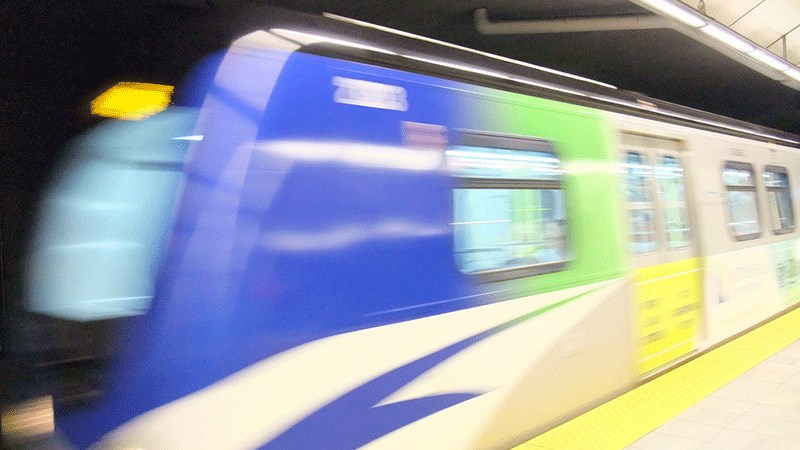Commercial real estate development close to rapid transit stations have been a proven pay off in Metro Vancouver, so the $7.5 billion in transportation plans being put in place from the Fraser Valley to Vancouver’s West Broadway are enticing.
SkyTrain’s Evergreen line into Coquitlam and Port Moody will be up and running by next summer, a light-rail transit project in the Fraser Valley could be on track and a new Vancouver link to the University of British Columbia (UBC) is also on the decks.
The B.C. government has committed $246 million for Metro Vancouver transit improvements and the federal government has pledged $370 million over the next three years.
The challenge for developers is to figure when the trains will start and where, exactly, they will stop.
According to a survey from commercial real estate firm Jones Lang LaSalle (JLL), nearly 90 per cent of new office construction outside downtown Vancouver since 2012 was or will be built within 500 metres of a transit station.
Studies have shown that office buildings close to transit stations generally earn higher rents and lower vacancies than those further away.
Yet, for residential rental developers, there is a warning: a recent survey by Canada Mortgage and Housing Corp. reveals that areas served by SkyTrain have a higher tenant turnover rate than other neighbourhoods.
The areas with the most footloose tenants include Surrey (27.4 per cent), Richmond (24.9 per cent), downtown Vancouver (22.9 per cent) and North Burnaby (22.8 per cent). All of these areas have SkyTrain access, with multiple stations.
Condominium developers, however, see proximity to transit stations as a key marketing positive.
So where to be assembling land?
Surrey LRT
The City of Surrey remains confident construction on the proposed Surrey light-rail transit (LRT) line will start in 2018, despite questions surrounding regional funding of the project.
Paul Lee, the rapid transit and strategic projects manager with Surrey’s engineering department, said the city is continuing consultation with TransLink.
“We’re working on the design to get this thing done so it’s shovel-ready,” Lee said. “So when the funding is all available we can just push this project out.”
While Budget 2016 indicated that the federal government would be willing to foot 50 per cent of the bill for green-lit public transportation infrastructure projects, and the province will potentially contribute a third, that still leaves a sizable portion of the $2.6 billion price tag unpaid for Surrey’s 27 kilometres of street-level light-rail lines.
Larry Fisher, president of the Surrey-based development company Lark Group and a member of the recently formed Light Rail Links community coalition, said Surrey is committed to finding the cash to fund the remaining costs of the project.
“I’m very hopeful [the regional government] will be able to get the funding together,” Fisher said.
“It’s the timing – when we would be ready … in terms of infrastructure. [The federal Liberals] want the money spent pretty soon, so how fast it can all get approved and get done is the question.”
So, let’s say it is a go. The LRT would link Surrey Central with Langley, with a second line running to White Rock.
On the Surrey-Langley corridor, eight stations are being considered: King George at Surrey Centre, 152nd Street, 140th Street, 168th Street, 176th Street, the Langley Bypass, and at Langley Centre, where an elevated LRT is included.
Eleven stations are eyed for the Surrey-White Rock line, which includes both LRT and fast buses, both running parallel or on King George Highway through Surrey. Key stations would include 72nd Avenue in Newton; 24th Avenue in South Surrey; and 16th Avenue at 152nd Street in uptown White Rock.
Lee said he is sure of one thing: if Surrey builds an LRT line, the construction impact will be minor compared with recent SkyTrain projects.
“It will never be as bad as the Canada Line on Cambie Street because that was a cut-and-cover,” he said. “They dug a big hole in the ground. We won’t be digging a big hole; we will be laying tracks so people will continue to have access to the businesses while this is ongoing.”
Vancouver subway
The City of Vancouver is pitching for a $2-billion subway that would run beneath Broadway Avenue from Clark Street west to Arbutus Street, connecting with the Canada Line station near City Hall at West Broadway. Three stations have apparently been confirmed: in the 500 block of West Broadway near Cambie; at Oak Street and West Broadway (where developer Bosa already has a 10-storey office and retail project planned) and the 2000-block of West Broadway at Arbutus.
Recently, an offshore developer bought a restaurant site in the 500-block of West Broadway for a hefty $1,000 per square foot, as there is speculation this area could be upzoned to higher density.



